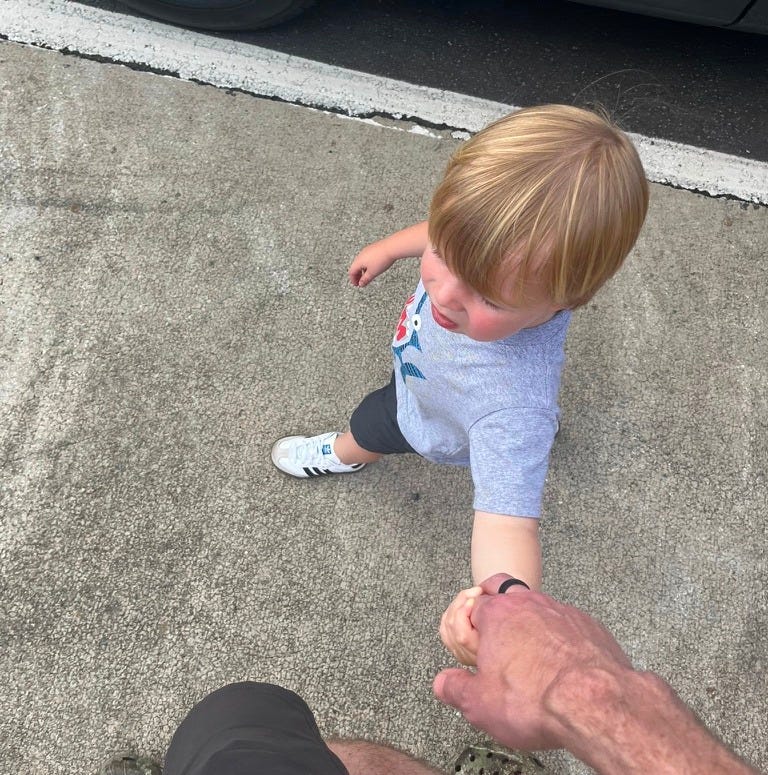The Leaders We Remember vs. The Leaders We Replace
The Copywriter Column #224
Summary
A reflection on the difference between positional leadership that merely fills organizational roles and transformational leadership that shapes who people become. Inspired by a family conversation about legacy and mortality, this piece explores how every interaction is a choice between being forgotten when you leave or becoming a guiding memory that influences others long after you're gone. The distinction isn't about skills or charisma, it's about whether you focus on managing today's deliverables or investing in tomorrow's leaders.
My brother-in-law was recently talking to my dad about his health — about choices that could mean more years or fewer, more moments or just photographs.
(My 2.5-year-old son was the subtext of the conversation.)
And then my brother-in-law said it:
"You can either be a memory or just a picture."
A picture is static. It captures a moment but teaches nothing about how to live. It's proof you existed, not evidence you mattered.
We all know people who are pictures — present in the organizational chart, visible at meetings, technically there. They occupy space without creating change and wear the “titles” but without having impact.
A memory is different. Memories are dynamic and come alive in their retelling. They shape how we think, how we act, and who we become. Memories are the stories we tell ourselves when we need courage, wisdom, or direction.
This distinction cuts straight to the heart of leadership.
Positional leadership is a picture. It's the org chart, the title, the assigned authority. It's managing deliverables and checking boxes. It exists because structures demand it, not because people need it. When positional leaders leave, they're replaced. The machine keeps running. The picture stays on the wall until someone takes it down.
Transformational leadership creates memories. It's the mentor who saw something in you before you saw it yourself. The boss who taught you not just what to do, but how to think. The leader who made you believe you could be more than you were. These leaders don't just occupy positions; they multiply themselves through others. Their influence ripples outward in ways that can't be captured in a performance review or quarterly report.
The difference isn't about charisma or communication skills. It's about intention.
Picture-leaders focus on the present (e.g. this quarter's results, this year's goals, etc.) Memory-makers invest in the future, not just what needs to be done, but who people are becoming while they do it.
My dad obviously has choices to make. Hard ones. Not because a photograph of him will mean less to my son, but because memories require time to form. They need investment, not just proof of existence.
The same is true in our work.
Every interaction is a choice: Will this be something they file away, or something that changes them? Will I be someone they reported to, or someone who helped them grow? Will my leadership be a line on their resume, or a story they tell?
We're all going to leave eventually — the role, the company, this life. The question isn't whether we'll be remembered. It's whether our memory will matter. Whether it will guide someone when they're uncertain, encourage them when they're struggling, or inspire them when they're ready to quit.
You can be a picture or a memory. The choice is yours. But only one of them lives after you’re gone.
Want to simplify your approach to copywriting?
The Minimalist Copywriter's Playbook is a free micro-course that strips away complexity and reveals the core strategies that transform your copy (and your results).
The Copywriter Column is a weekly glimpse into the mind of an agency copywriter. Thinking about subscribing? Here’s what else you can expect.


